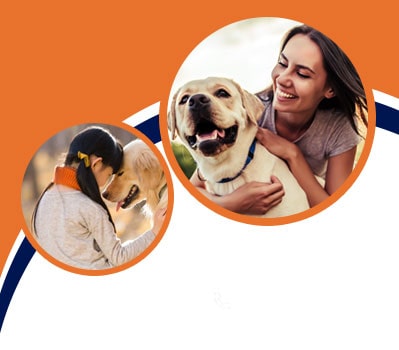Emotional Support and Service Animals Policies
Airlines are taking a risk and changing their regulatory frameworks in response to increased mental health awareness. Similarly, the comfort of a customer with a physical impairment has been a problem that has been properly handled by airlines. The US Department of Transportation confirms the concerns, stating that under the Air Carrier Access Act, airlines cannot refuse to allow an emotional support or service animal to fly if the passenger provides the necessary documents and verbal assurance in the case of an emotional support animal and a service animal, respectively. As a result, animals are increasingly travelling between places in the United States and throughout the world.
Emotional Support Animals
An Emotional animal that supports travellers diagnosed with any psychological handicap is known as an emotional support animal.
Rules for flying with an Emotional Support Animal
Most airlines that allow emotional support animals to travel limit the number of animals allowed per passenger to one.
Airlines usually allow a dog or cat as an emotional support animal, and in rare situations, a trained miniature horse. To fly, the animal must be at least four months old.
The animal must be clean and behave in a non-disruptive manner.
Throughout the trip, the animal must be kept between the passenger's feet, under the seat, or on the passenger's lap.
The airline requires adequate documents before allowing an emotional support animal to board. An ESA letter is included in the paperwork, which must explicitly state:
- According to the Diagnostic and Statistical Manual of Mental Disorders, the passenger has a mental or emotional handicap.
- The emotional support animal must accompany the passenger on the aircraft in order to aid him or her during the journey or at the destination.
- It should contain the name and contact information for the mental health professional who is supporting the traveller with his or her handicap. The mental health practitioner's credentials, as stated on official letterhead, are required to prove the passenger's need for an emotional support animal.
- The letter must be sent out within a year of the trip's departure date.
Service Animals
A service animal is a trained animal that assists a passenger with a physical impairment by performing one or more tasks.
Rules for flying with a Service Animal
- The number of service animals allowed in the cabin is usually limited to one.
- Airlines usually classify a dog, cat, or miniature horse as a service animal.
- At the airport or during the flight, a service animal must be well trained, easily recognised by a tag, and tied with a leash.
- Boarding is refused to a service animal that cannot fit between the passenger's feet or on their laps.
It is not necessary to get official paperwork while flying with a service animal. A convincing verbal guarantee from the disabled passenger should suffice. When the journey is longer than 8 hours, however, the airline needs the customer to fill out an Animal Sanitation Form. If the airline official isn't happy with the verbal promise, the traveller may be required to provide the animal's Veterinary Health Form or Immunization Record, as well as the Animal's Behavior Form.
What is the difference between an Emotional Support Animal and Service Animal?
The most basic definition is that a service animal aids a disabled person. A service animal does not require any further documentation or advance notification if it is utilised for purposes other than emotional or mental assistance (except on flights lasting eight hours or more). Animals utilised for emotional or psychological assistance, on the other hand, are subject to further scrutiny as determined by particular airlines.
One definition of service animals is included in the Americans With Disabilities Act, while another is found in the Air Carrier Access Act. Since we're talking about flying, which is covered by the ACAA, here's the definition:
"A service animal is any animal that is individually trained or capable of giving help to a person with a disability; or any animal that provides emotional support to individuals with disabilities."
On the surface, this implies that all service and support animals accompanying their owners are considered "service animals." However, there are extra requirements for emotional support animals (ESAs) and psychiatric support animals (PSAs), requiring documentation in the form of letters from mental health specialists and vet records, among other things.



Submit your review